Pallet Inverter: How to Convert Domestic Pallets to ISO Standard for Export?
Exporting goods can be a complex process. You have to manage logistics, paperwork, and regulations. One small detail can cause big problems: the pallet. Many companies, especially in industries like steel manufacturing, use sturdy, reusable domestic pallets for internal movement. But these often don't meet international shipping standards. This mismatch can lead to your valuable shipment being rejected at the port, causing costly delays and frustrating your customers. It forces your team into slow, dangerous manual labor to restack goods, risking both worker injury and product damage. The solution is simpler and more efficient than you might think. A pallet inverter is a specialized machine designed to solve this exact problem, making your export process smooth and secure.
A pallet inverter is a piece of equipment that allows you to switch pallets under a fully loaded product stack quickly and safely. The machine works by securely clamping the load, rotating it up to 180 degrees, and then allowing the operator to remove the original domestic pallet from the top. A new, export-compliant pallet, such as a heat-treated ISPM 15 pallet, can then be placed on the load before it is rotated back to its original position. This entire process is done mechanically, eliminating the need for manual restacking and ensuring the integrity of your products.
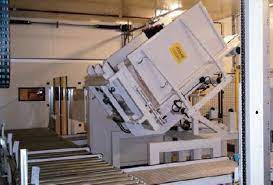
This simple mechanical process sounds straightforward, but its impact on a business's bottom line and operational flow is profound. For a leader like Javier Morales in the steel industry, where efficiency and cost control are paramount, understanding how this equipment works is just the first step. The real value lies in how it addresses core challenges, from logistics and compliance to worker safety and throughput. Let's dig deeper into why this is a critical piece of equipment for any serious exporter.
Why is standardizing pallets for export so critical for your business?
In a global business like steel manufacturing, you focus on big things: production tonnage, energy costs, and market demand. A wooden pallet seems like a minor detail. But when a multi-million dollar shipment to an international client is on the line, that pallet becomes one of the most critical parts of your logistics chain. Using a non-compliant domestic pallet for an export shipment can trigger a cascade of problems at the port. Customs officials can refuse the entire container, leading to expensive storage fees, penalties, and the nightmare of having to return or manually rework the entire shipment. This not only destroys your profit margin on that order but also damages your reputation as a reliable international supplier. The answer is to standardize your export pallets to global norms like the ISO standard. This isn't just about following rules; it's a strategic decision to protect your revenue and your relationships.
Standardizing pallets for export is critical because it ensures your shipments comply with international regulations, most notably ISPM 15, which governs the treatment of wood packaging material to prevent the spread of pests. This compliance is essential for avoiding customs rejections and costly port delays. Furthermore, using standardized pallets like ISO-certified ones protects your products during transit and allows for seamless, efficient handling by logistics partners and automated systems worldwide, safeguarding your assets and your professional standing in the global market.
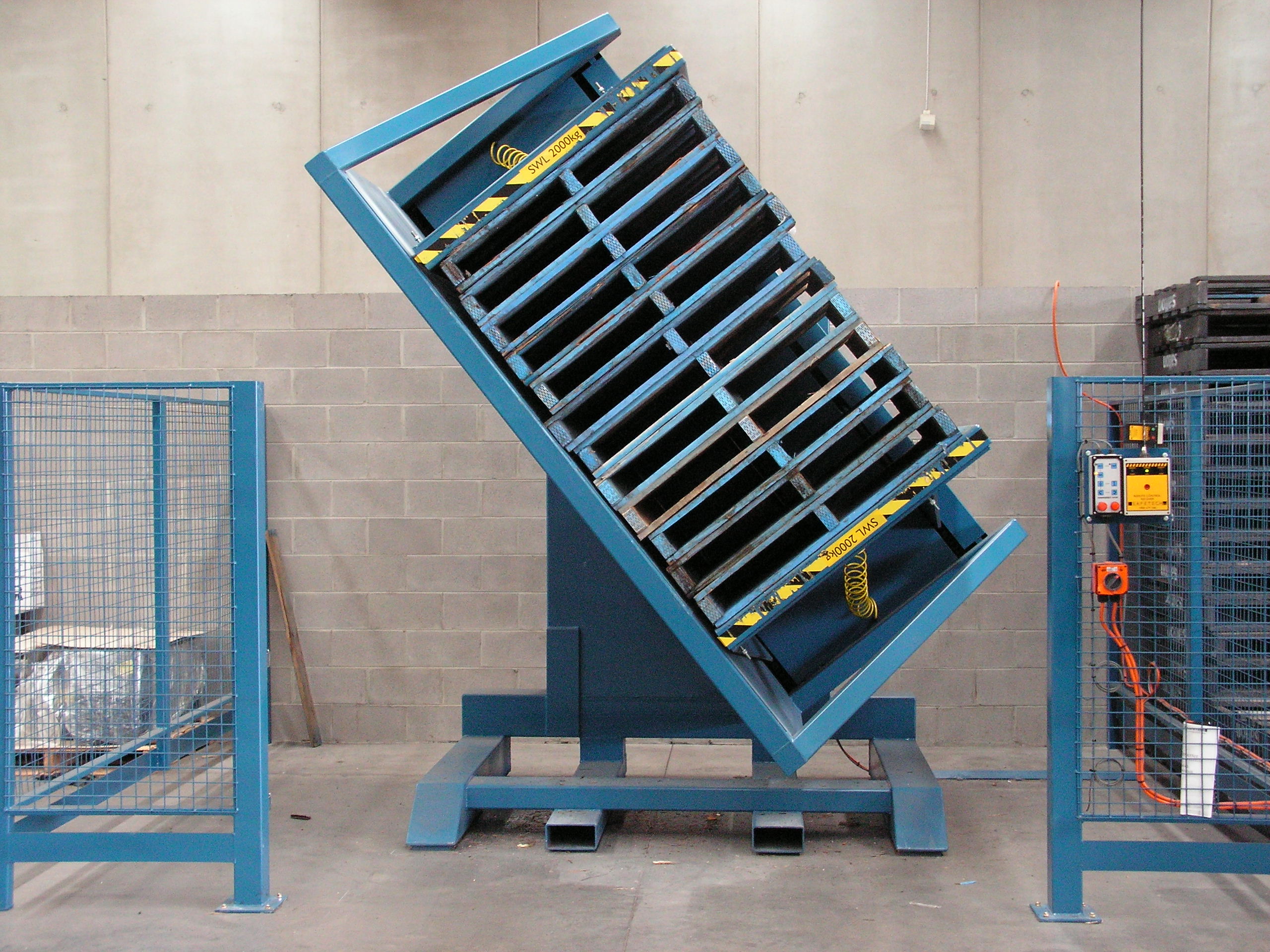
The High Cost of Non-Compliance
The primary driver for pallet standardization is international law. The International Standards for Phytosanitary Measures No. 15 (ISPM 15) is a set of rules adopted by many countries to prevent the international transport of diseases and insects that could negatively affect plants or ecosystems. This standard mandates that all solid wood packaging material, including pallets, must be debarked and then heat-treated or fumigated with methyl bromide. The material must then be stamped or branded with a mark of compliance. Most domestic or internal-use pallets, even if they are very robust, do not undergo this treatment. If your shipment arrives at a foreign port on a non-stamped pallet, customs has the right to quarantine, reject, or even destroy the entire shipment at your expense. As a steel mill owner, you know the value of the products on that pallet. The risk of losing it all over a piece of untreated wood is simply too high. This isn't a theoretical problem; it happens every day. In my career, I've seen companies face tens of thousands of dollars in fees and lost revenue from a single rejected container.
Logistics and Supply Chain Efficiency
Beyond legal compliance, standardization creates massive efficiency gains. The global logistics network is built around standard sizes. ISO pallets have dimensions that are optimized for fitting perfectly into standard 20-foot and 40-foot shipping containers, maximizing space and reducing shipping costs per unit. When your products arrive at their destination, they are often moved and stored in automated storage and retrieval systems (AS/RS). These systems are calibrated for standard pallet dimensions and entry points for forklifts. A non-standard pallet can jam these systems, causing downtime and requiring manual intervention. By shipping on a standard pallet, you ensure your product can move smoothly through every stage of the global supply chain without interruption.
| Aspect | Using Non-Compliant Domestic Pallets | Using Standardized Export Pallets |
|---|---|---|
| Customs Risk | High risk of rejection, fines, and delays. | Low risk; meets ISPM 15 requirements. |
| Shipping Cost | Inefficient container loading; higher cost per unit. | Optimized space utilization; lower shipping cost. |
| Handling Abroad | May not fit foreign equipment or automated systems. | Compatible with global logistics infrastructure. |
| Reputation | Seen as unprofessional and unreliable. | Seen as a professional, experienced exporter. |
| Product Damage | Higher risk during manual re-stacking if caught. | Lower risk with smooth, end-to-end handling. |
What are the different types of pallet inverters and how do they work?
Once you recognize the need to switch pallets, the next question is about the equipment itself. The term "pallet inverter" can refer to a few different machine designs, and choosing the right one depends on your product, your facility's layout, and your workflow. You might be concerned about the machine's footprint, its speed, or how it will integrate with your existing processes. Making the wrong choice means you could end up with a machine that is too slow for your needs, too large for your space, or requires awkward handling procedures that negate the benefits. But don't worry, the options are quite logical. By understanding the three main categories, you can easily identify which approach is best suited for your operation.
The primary types of pallet inverters are free-standing 180-degree models, 90-degree pallet changers, and fully integrated inline systems. Free-standing inverters are loaded by forklift, clamp the load, and perform a full 180-degree rotation. The 90-degree changers, often loaded at ground level, tilt the load to allow the old pallet to be removed and a new one inserted. Inline systems are built directly into a conveyor line for fully automated, hands-off pallet exchange in high-throughput environments.
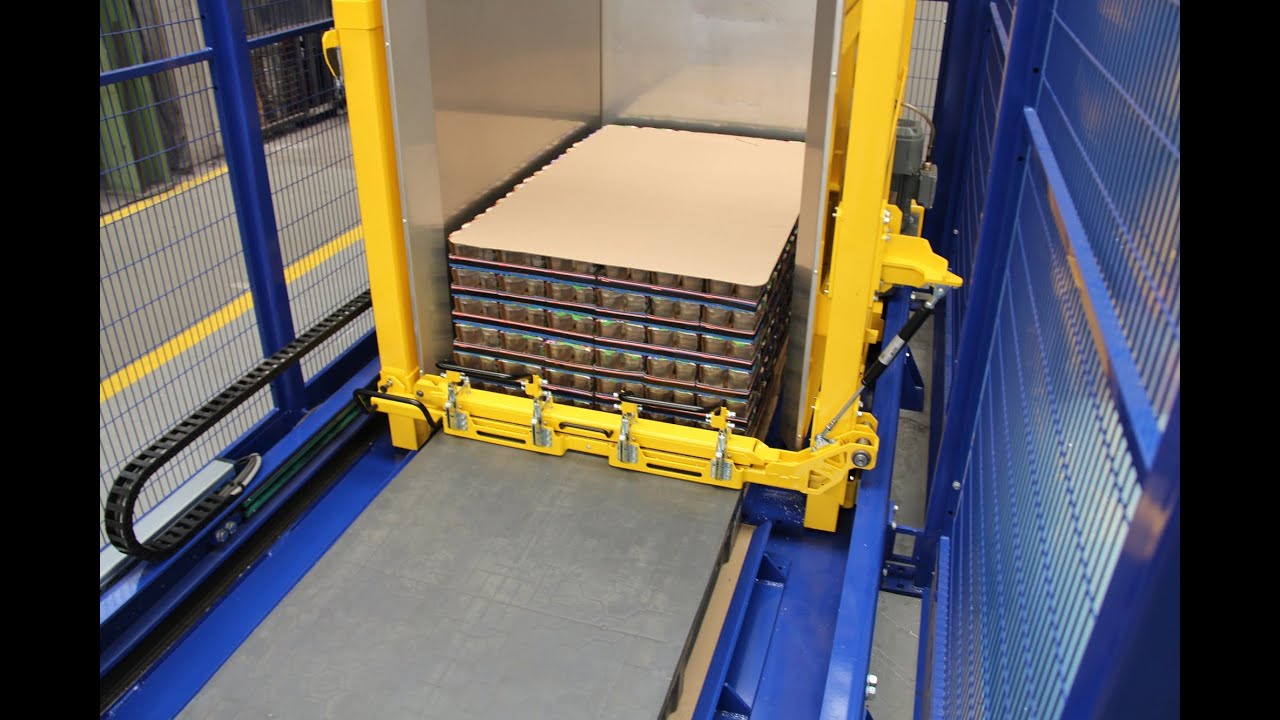
Free-Standing 180-Degree Inverters
This is perhaps the most common and versatile type of pallet inverter. A forklift operator places the entire loaded pallet into the machine's opening. The machine has two clamping tables that press in from the top and bottom to secure the load. Once the product is held tightly, the entire clamping assembly rotates 180 degrees. The pallet, which is now on top, can be easily lifted off by the forklift. The operator then places the new, export-compliant pallet onto the load, and the machine rotates back 180 degrees. The newly palletized load is then removed. I've recommended this style to many clients because of its flexibility. It can handle a wide variety of load sizes, shapes, and weights, from bags of cement to boxes of consumer goods. It is a standalone unit, which means it doesn't require complex integration and can be placed anywhere you have floor space and forklift access. This makes it an excellent choice for operations with variable product lines or for retrofitting into an existing facility.
90-Degree Tippers and Pallet Changers
Unlike the 180-degree inverter, a 90-degree pallet changer or "tipper" works on a different principle. These machines are often designed for ground-level loading, meaning an operator can place a pallet on them with a simple hand pallet truck. The machine then gently tilts the entire load back 90 degrees. In this tilted position, the pallet rests on the floor and can be easily slid away from the product stack. The operator then slides the new pallet into place, and the machine tilts the load forward, setting it down onto the new pallet. This design is particularly useful for sensitive or unstable loads, as it avoids a full inversion. It's also often more space-efficient and can be safer for pedestrian traffic since the loading and unloading can happen at floor level without a forklift always being present. This is a great fit for food and beverage or pharmaceutical applications, where hygiene and gentle handling are key.
Fully Automated Inline Systems
For high-volume operations, like a large distribution center or a fast-moving manufacturing plant, a fully automated, inline pallet inverter is the ultimate solution. This machine is not a standalone unit but is integrated directly into a production or packaging conveyor line. A loaded pallet moves along the conveyor and enters the pallet exchange system automatically. The exchange happens without any human intervention, and the newly palletized load continues down the conveyor line for stretch wrapping or shipping. These systems offer the highest throughput and lowest labor cost per pallet. However, they represent a significant capital investment and require careful planning and engineering to integrate them seamlessly into an existing line. This is the kind of solution a CEO like Javier would consider as part of a major digital transformation or facility upgrade, aiming for maximum automation and efficiency.
| Machine Type | Loading Method | Speed | Footprint | Key Advantage | Best For |
|---|---|---|---|---|---|
| 180-Degree Inverter | Forklift | Medium | Medium | Versatility for various loads | General manufacturing, warehousing |
| 90-Degree Changer | Forklift or Pallet Truck | Medium | Small-Medium | Ground-level access, gentle handling | Unstable loads, food & pharma |
| Inline Automated System | Conveyor | High | Large | Maximum throughput, no labor | High-volume distribution centers |
How does a pallet inverter improve operational efficiency and worker safety?
In any heavy industry, the pressure to improve efficiency is constant. At the same time, ensuring the safety of your workforce is not just a priority; it's a responsibility. The manual process of switching pallets is a bottleneck that fails on both counts. It involves two or more workers physically lifting and moving heavy products from one pallet to another. This is incredibly slow, physically exhausting, and one of the leading causes of workplace injuries. This single, inefficient step can hold up your entire shipping department. It introduces a high risk of musculoskeletal disorders for your employees and increases the chances of dropping and damaging your valuable products. By mechanizing this process, a pallet inverter addresses these two fundamental challenges—efficiency and safety—at the same time.
A pallet inverter transforms a slow, dangerous, and labor-intensive task into a quick, safe, and automated process. It drastically improves operational efficiency by reducing the time required to switch a pallet from many minutes to under 90 seconds. Simultaneously, it enhances worker safety by completely eliminating the manual lifting of heavy items, which is a primary cause of back injuries and other serious physical strains in industrial environments.
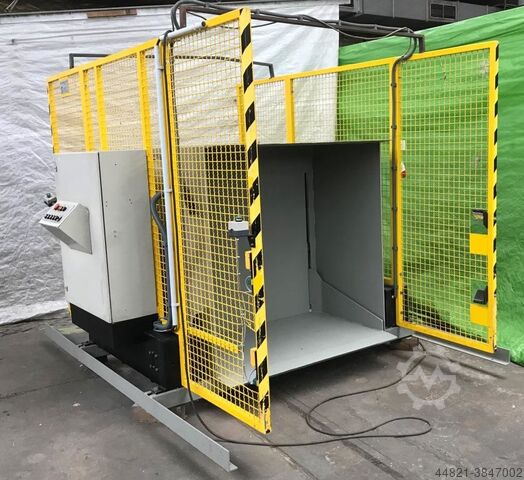
A Leap in Throughput and Efficiency
Let's look at the numbers, because as an engineer, that's what matters to me. Manually swapping a pallet can take two workers anywhere from 10 to 20 minutes, depending on the weight and stability of the load. If you have 20 pallets to ship in a day, that's over 5 hours of combined labor spent just on re-stacking. It's a massive productivity drain. Now, consider a pallet inverter. A single operator using the machine can swap a pallet in about 90 seconds. For those same 20 pallets, the total time is just 30 minutes. You've just freed up hours of labor that can be used for more value-added tasks, like quality control or preparing the next shipment. This directly addresses the goal of increasing产能利用率 (capacity utilization). Your shipping department is no longer a bottleneck; it's a smooth, fast-flowing part of your operation. This increase in speed means you can process more orders per day with the same number of staff, directly impacting your plant's overall output and profitability.
Revolutionizing Ergonomics and Worker Safety
The most important benefit, in my opinion, is the impact on your people. Manual re-stacking is a recipe for injury. Lifting heavy boxes, bags, or components repeatedly puts immense strain on the back, shoulders, and knees. This leads to musculoskeletal disorders (MSDs), which are among the most common and costly workplace injuries. As a factory owner, I am responsible for the well-being of my team. I know that an injured employee means lost productivity, potential workers' compensation claims, and a negative impact on morale. A pallet inverter completely eliminates this risk. The machine does all the heavy lifting. The operator is simply controlling the equipment, not physically straining their body. This change from manual labor to machine operation is a fundamental improvement in workplace ergonomics. It creates a safer environment, reduces employee turnover, and shows your team that you value their health and safety. For a CEO like Javier, this is a direct investment in his most valuable asset: his people. It also reduces the financial risk associated with workplace accidents.
| Metric | Manual Pallet Swapping | Using a Pallet Inverter | Improvement |
|---|---|---|---|
| Time per Pallet | 10-20 minutes | ~90 seconds | >90% Faster |
| Labor Required | 2+ Workers | 1 Operator | 50%+ Labor Reduction |
| Risk of Injury | High (MSDs, strains) | Very Low | Dramatically Safer |
| Risk of Product Damage | Moderate to High | Very Low | Protects Product Integrity |
| Process Consistency | Low (depends on workers) | High (repeatable process) | Guarantees Quality |
What should a CEO consider before investing in a pallet inverter?
As a CEO or factory owner, you are not just buying a piece of equipment. You are making a strategic investment. The decision to purchase a pallet inverter must be measured against your long-term goals for cost reduction, efficiency, and digital transformation. It's easy to get focused on the initial purchase price, but that's only a small part of the story. A poor investment decision can saddle you with a machine that has high hidden costs, doesn't grow with your business, or fails to integrate with the smart factory you are trying to build. This can undermine your strategic goals and turn a potential asset into a liability. To ensure your investment pays dividends for years to come, you must look beyond the machine itself and consider the total picture.
Before investing, a CEO should evaluate the pallet inverter's Total Cost of Ownership (TCO), which includes not just the initial price but also maintenance, energy use, and training costs. It is crucial to assess the machine's "future-readiness"—its ability to integrate with your digital factory systems like MES and IoT platforms. Most importantly, you should choose a supplier who acts as a long-term strategic partner, offering expertise and support beyond the initial sale, helping you achieve your broader business objectives.
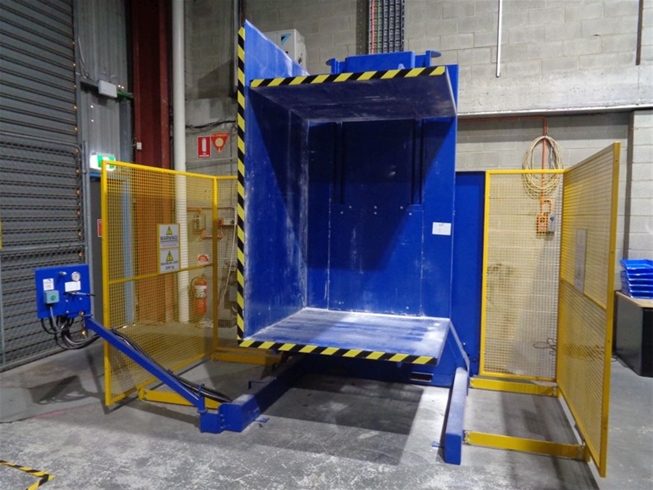
Look Beyond the Price Tag: Total Cost of Ownership (TCO)
Javier Morales faces challenges with aging equipment and volatile energy costs. This is why TCO is so critical. The sticker price of a pallet inverter is just the beginning. A cheaper machine might use less efficient hydraulics or motors, leading to higher electricity bills over its lifetime. This directly works against the goal of reducing unit energy consumption. You must also consider maintenance. Does the machine use standard, readily available components, or will you be locked into expensive, proprietary spare parts from the manufacturer? What is the expected maintenance schedule and associated labor cost? These ongoing operational expenses can quickly eclipse any savings from a lower initial purchase price. A thorough TCO analysis should include:
- Purchase and Installation Cost: The initial capital outlay.
- Energy Consumption: The machine's power rating and expected usage.
- Maintenance & Spare Parts: The cost and availability of wear-and-tear items.
- Operator Training: The time and cost to get your team proficient.
- Expected Lifespan: How long the asset will serve your business.
A good supplier will be transparent about these costs and help you calculate a realistic TCO.
Future-Proofing Your Investment for the Digital Factory
Javier's goal to deploy MES, IoT, and data analytics is a forward-thinking strategy. Even a seemingly simple machine like a pallet inverter should fit into this vision. A modern pallet inverter can and should be more than just a mechanical device. Ask potential suppliers if their machines can be equipped with sensors. Can it track the number of cycles it has run for predictive maintenance? Can it communicate with your Manufacturing Execution System (MES) to confirm that a pallet swap has been completed for a specific order? Can it report faults or operational status to a central dashboard? This is the essence of Industry 4.0. Investing in a machine that is "IoT-ready" means you are buying an asset that will grow with your digital transformation, not one that will become an isolated "dumb" machine in a few years. This ensures your investment continues to provide value as your factory becomes smarter and more connected.
My Insight: Choose a Partner, Not Just a Supplier
This is the most important piece of advice I can offer, based on my own journey from being an engineer to owning a factory. When I started SHJLPACK, I didn't just want to build machines. I wanted to help people solve problems. I remember the suppliers who helped me the most when I was growing my own business. They weren't the ones with the cheapest price list. They were the ones who took the time to understand my challenges—my aging equipment, my need to reduce costs, my desire to grow. They acted as partners, offering advice on layout, process flow, and maintenance. They were invested in my success.
This is the philosophy I have built my company on. For a leader like Javier, who is looking for a strategic partner, this is what matters most. Your equipment supplier should be able to provide more than just a machine in a crate. They should offer comprehensive support for installation, commissioning, and training. They should be able to provide expert advice on how their equipment can help you meet environmental regulations and achieve your digital transformation goals. They are not just selling you a pallet inverter; they are providing a total solution. This partnership approach is what turns a simple equipment purchase into a powerful strategic advantage.
Conclusion
A pallet inverter is a strategic tool to streamline exports, enhance safety, and boost efficiency, ensuring your products move seamlessly across borders.




